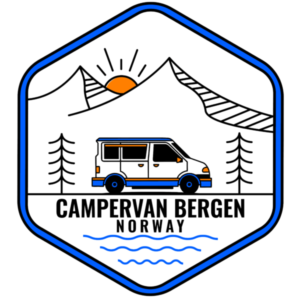Understanding Norway’s Toll System
Norway’s toll system is an essential component of its infrastructure, playing a significant role in funding road maintenance and development. Tolls are applied on various roads across the country and can significantly vary depending on multiple factors. Understanding how the toll system operates is crucial for any traveler looking to budget for road trips or commutes within Norway.
Primarily, tolls are categorized based on the type of vehicle. This classification includes cars, trucks, and buses, each of which incurs different rates. Moreover, toll charges can also vary based on the time of day. For instance, driving during peak hours may attract higher tolls compared to late-night or early-morning travel. Therefore, it is advised for travelers to plan their journeys accordingly to minimize costs.
Tolls are collected by various companies and authorities in different regions, leading to some discrepancies in rates across the country. Some cities, such as Oslo and Bergen, implement urban toll rings that charge vehicles entering the city during specified hours. Travelers should be aware of these area-specific charges, as they can accumulate quickly depending on entry and exit frequency. Additionally, some tolls may have exemptions or discounts available for electric vehicles, which are profoundly popular in Norway.
Notably, the revenue generated from tolls is primarily used for building and maintaining roads, bridges, and tunnels. The Norwegian government emphasizes transparency in toll revenue utilization, which assures citizens and travelers that their contributions directly benefit the nation’s infrastructure. Therefore, understanding Norway’s toll system not only aids in financial planning but also highlights the importance of collective investment in road safety and accessibility.
Utilizing Toll-Free Alternatives
Traveling through Norway can be a thrilling experience, marked by breathtaking landscapes and charming towns. However, the costs associated with toll roads and ferry crossings can accumulate quickly. To save money, exploring alternative routes that are either toll-free or less expensive is a sensible strategy.
One excellent way to avoid tolls is by using the scenic coastal roads instead of the main highways. For instance, the Rv1 (Route 1) along the southern coast offers magnificent views of the coastline, and it is a toll-free alternative to the E39. Another noteworthy route is the Rv13 which provides an enchanting drive through the fjords and is particularly beautiful during the summer months. This route not only sidesteps toll expenses but also showcases Norway’s natural beauty.
Additionally, for those traveling towards the northern regions, consider taking the E6 instead of toll-laden alternatives. While parts of the E6 may incur fees in certain areas like Oslo and Bergen, by choosing specific segments, one can minimize costs effectively. Researching and planning routes that utilize secondary roads can be beneficial; they often include delightful stops at local attractions and eateries that are easily overlooked when taking main thoroughfares.
Another effective strategy is to plan your journey to avoid peak toll hours. Generally, prices increase during rush hours and during holiday seasons. By traveling during off-peak times, you can not only save on tolls but also enjoy a more relaxed drive. Consider departing early in the morning or late in the evening when congestion is low, thus enriching your travel experience while keeping expenditures down.
By proactively selecting routes that exclude expensive tolls or optimizing travel times, travelers can experience the splendor of Norway without the financial burden of toll fees.
Maximizing Ferry Benefits and Discounts
Ferries are an integral part of Norway’s transportation system, providing essential links between the mainland and its many islands and fjords. Understanding the ferry routes and their pricing can help travelers save considerably on their journeys. Norwegian ferry services operate numerous routes, each with varying schedules and prices that can fluctuate based on the season and demand. To maximize the benefits of ferry travel, it is crucial to familiarize oneself with these routes and their respective pricing structures.
One way to achieve significant savings on ferry fares is by booking tickets in advance. Many ferry operators offer reduced prices for early bookings, so planning ahead can yield lower costs. Additionally, utilizing discount cards such as the “Boreal” or “Fjord Ticket” can grant travelers access to special rates and promotions not available to regular passengers. These cards are particularly beneficial for those who frequently travel by ferry, as they often provide substantial savings over time.
Traveling during off-peak hours can also result in lower fares. Ferries tend to be less crowded and might offer discounted tickets during these times, making it a win-win situation for budget-conscious travelers. Furthermore, many ferry operators run family packages that offer a flat rate for all family members, reducing the average cost per person. These promotions can be particularly advantageous for groups or families looking to explore Norway’s picturesque coastline without overspending.
Additionally, keeping an eye on seasonal promotions from ferry companies can lead to unexpected savings. Special deals or discounts may be available at certain times of the year, making it worthwhile to check ferry operators’ websites regularly. By leveraging these strategies, travelers can effectively navigate Norway’s ferry system while minimizing transportation costs.
Using Technology to Help Save on Costs
In today’s digital age, technology plays a crucial role in managing travel expenses, including tolls and ferry costs in Norway. Several applications and tools have emerged that can assist travelers in navigating these charges effectively while maximizing savings. One effective way to start is by utilizing navigation apps that highlight toll-free routes. These applications not only plot the most efficient path to your destination but also provide options to avoid tolls altogether, thus helping you plan your journey while keeping expenses low.
Additionally, cost estimation apps serve as valuable resources for budgeting your travel. By inputting your route details, these tools can provide estimates of toll fees and ferry costs, allowing you to anticipate your expenses beforehand. This foresight empowers you to adjust your itinerary to adhere to budget constraints and seek alternatives when necessary.
The advancement of technology has also led to the introduction of electronic toll tags, which can significantly reduce toll expenses. These devices automatically register your vehicle as you pass through toll stations, often at discounted rates compared to standard payment methods. Furthermore, many electronic toll systems offer savings for frequent travelers or for those who opt for pre-loaded accounts, making them a wise choice for anyone planning extensive travel within Norway.
In terms of ferry travel, online platforms for booking tickets provide another layer of budget-friendly options. By comparing prices across various ferry services and booking in advance, travelers may discover promotional rates or deals not available at the terminal. Some regional operators also offer mobile applications that ship discounts or offers that can ensure a more economical ferry experience.
By leveraging these technological solutions, travelers can navigate Norway’s tolls and ferries more efficiently, ultimately leading to a better-managed travel budget.

